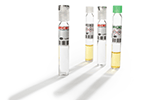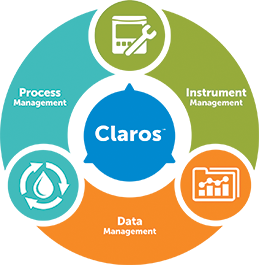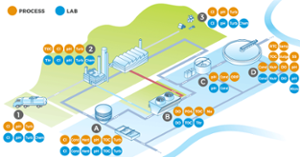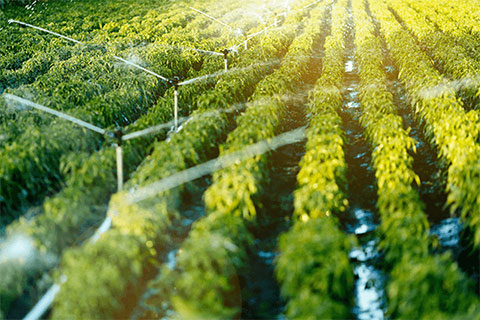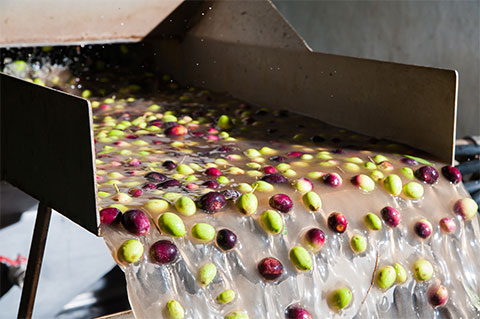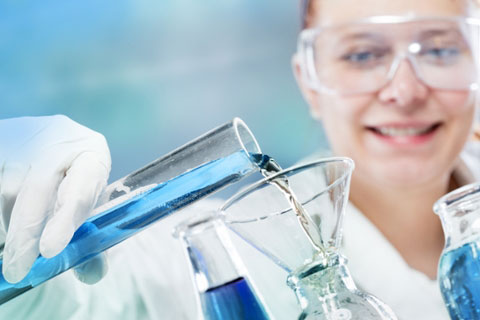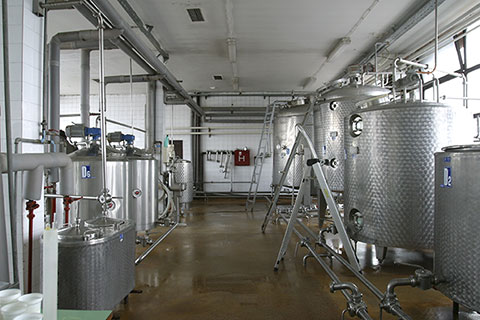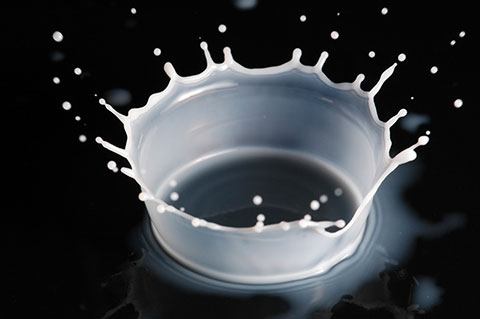Complete Water Analysis from Influent to Effluent
Abundant, clean water is essential to food processing as an ingredient, as a way to clean and move raw materials, and as the principal agent used in sanitizing plant machinery. Water is an important topic in the food industry as companies are paying more attention to wastewater management in order to meet stricter regulations, protect social reputations, and reduce energy consumption. Many multi-national companies have established internal wastewater guidelines requiring all global plants to monitor key wastewater parameters and comply with limits by measuring at set frequencies.
At Hach®, we understand your water needs when it comes to ensuring the highest levels of product quality, consistency, and safety. Whether it is to maintain product quality, prevent product loss, meet your compliance limits, or optimize your water treatment, we have customizable solutions for your unique challenges.
- • Minimize waste and product loss
- • Increase energy efficiency
- • Reduce water consumption/water re-use
- • Reduce environmental impact (CO 2 footprint)
- • Improve environmental performance
Milk and Dairy: A consistent high-quality product is critical to brand and business. Dairy processing is a challenging environment for analysis of FOGS (Fats, Oils, Grease, and Solid Waste), salts, and particulates that are inevitably present in process streams. Saving time or increasing the reliability of your analyses and ensuring compliance with industry regulations is key.
Meats and Poultry: The use of water with adequate, chemical, and microbiological quality is of fundamental importance. Food processors have to take steps to assure that the water and water systems in their plants are safe and under their control.
Fruits, Vegetables, Corn, Grains, Fish/Seafood, Flavorings, Additives, etc: Food processors require large quantities of good quality water for a range of operations, including blending or mixing, cleaning, steam production, etc. Water may contain dissolved minerals, organic matter, gases, and microbial contaminants. All of these factors are important for overall quality assurance and sanitation. Understanding water quality and how it moves through the factory is one part of the equation needed to produce safe, high quality foods.
Influent/Raw Water
Incoming water quality directly impacts product quality. The consistency and purity of your influent or raw water greatly affects the taste and quality of your final product. We understand that the demands of monitoring and treating influent or raw water impact the longevity of your equipment and product quality.
Proper treatment and conditioning is essential for water as it enters any production process. The water used in production lines of food facilities must not only meet FDA drinking water regulations, it must be treated to remove additional minerals and chemicals which could impact taste and production processes.
Parameters Relevant to Influent/Raw Water Processes:
- Chlorine
- Conductivity/Total Dissolved Solids (TDS)
- pH/ORP
- Turbidity
- Dissolved Oxygen Carbon (DOC)
- Total Organic Carbon (TOC)
- Coagulation Control
- Hardness
Boiler & Cooling
We understand the challenges in monitoring the water in boiler and cooling processes. Condensate is critical to processes requiring high temperatures. When steam flows out from the boiler it passes through a series of heat exchangers that heat the process liquid.
TOC measurement in the condensate provides early warning to organic contamination of the steam. This stage in the process can also be a point where organic contamination is introduced into the condensate return system.
Optimizing boiler feed water and cooling tower feed minimizes chemical usage, prevents corrosion, and protects plant equipment.
Parameters Relevant to Monitor Boiler/ Cooling Processes:
- Dissolved Oxygen (DO)
- Conductivity/Total Dissolved Solids
- Free & Total Chlorine
- pH
- Total Organic Carbon (TOC)
- Total Hardness
- Ammonia
QA/QC Lab
QA/QC is responsible for the overall quality of the products that meet standards. Quality control procedures are vital to provide sustainable high-quality products. It is key to have accurate measurements, reliable results, and easy to use tools. Avoiding breakdowns and human error is crucial to optimizing quality control.
In-line process quality control provides production staff with analysis results 24 hours a day. Taking the guesswork out of the process improves efficiencies and reduces cost. Understanding the different methods available also empowers you to make the right decisions regarding your plant and final product.
Parameters Relevant QA/QC Applications:
- Total Acidity
- Sodium
- Color
- Calcium
- Chloride
- Turbidity
Clean-In-Place (CIP)
Clean-In-Place is commonly used in hygiene critical industries to clean a wide range of areas in the plant. CIP refers to the use of a mix of chemicals, heat, and water to clean machinery, vessels, or pipe work without dismantling plant items.
CIP ensures the cleanliness of food production surfaces. Food manufacturers design and qualify CIP procedures to ensure no microbial growth will contaminate products.
Parameters Relevant to CIP Applications:
- Inductive Conductivity
- Chlorine
- pH
- Turbidity/Solids
Water Re-Use
Reducing environmental impact is a key reason to optimize water re-use within your plant. Water re-use, including reclaimed and recycled water, is one method food facilities can employ to enhance sustainability practices and safeguard water quality standards by reducing the plant’s dependency on external water sources.
With water scarcity a serious concern worldwide, there is a need for industry to address the impact of its water consumption and consider ways in which it can optimize water use in the future while ensuring quality products. Examples include reverse osmosis systems.
Recovering and reusing wastewater from a manufacturing process requires treatment, whether basic or rigorous. Monitoring for parameters and compounds such as TOC, BOD, COD and TSS provides treatment operators with the information they need to assess quality and improve the efficiency of treatment processes.
Parameters Relevant to Water Re-Use Processes:
- Total Dissolved Solids (TDS)
- Chemical Oxygen Demand (COD)
- Turbidity
- Total Suspended Solids (TSS)
- pH
- Plus many more...

Product Loss
Prevent profit from going down the drain. Increase product yields and reduce overall costs by maximizing the monitoring of organics in your process. Losing otherwise salable product adds significant cost beyond the product loss itself in the form of higher energy, water, and treatment costs.
Using real-time organics monitoring specifically designed for demanding environments as a management tool allows plants to view and quantify the product in process streams and wastewater, allowing for more informed process control and incident response ultimately leading to reclaimed profit that would have otherwise been lost.
Parameters Relevant in Product Loss Applications:
- Total Organic Carbon (TOC)
- Chemical Oxygen Demand (COD)
- Turbidity
- Total Suspended Solids (TSS)
Wastewater
Wastewater management is a journey that evolves from laboratory measurements to automatic online process control and finally to smart optimization systems.
As one of the most resource intensive processes in your plant, the demands to minimize environmental impact and ensure compliance of discharge requirements are many. From nutrient removal to sludge treatment to sampling, proper monitoring and treatment reduces costs in both reagents and the prevention of permit violations.
Parameters Relevant in Wastewater Applications:
- Chemical Oxygen Demand (COD)
- Biochemical Oxygen Demand (BOD)
- pH
- Dissolved Oxygen (DO)
- Turbidity and Total Suspended Solids (TSS)
- (Total) Nitrogen
- (Total) Phosphorus
- Total Organic Carbon (TOC)
- Organics
- Sampling




